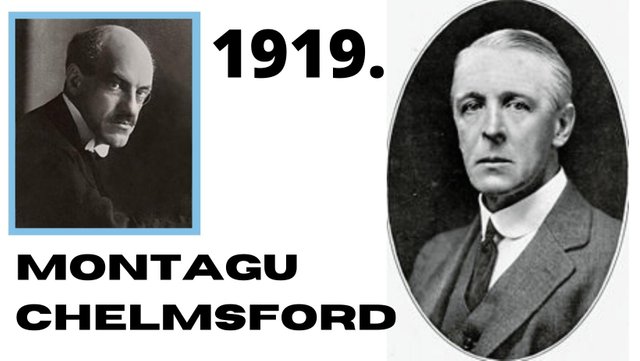Montagu Chelmsford Report 1919 & Round table meeting 1930-31-32
Montagu Chelmsford Report 1919

Meanwhile, Montagu and Chelmsford themselves finally submitted their report in July 1918. They made a lengthy visit to India the previous winter to find out the real issue. [20] The Government of India Act 1919 (also known as the Montagu-Chelmsford Reforms) was passed in December 1919. [20] It also abolished the "official majority" advantage in an unfavorable vote by the Indian government. [20] Although the departments of defense, foreign affairs, criminal law, communications, and income tax were under the ruler and central government in New Delhi, other departments And local autonomous governments were transferred to the provinces. [20] From now on, the provinces will be governed under a new archival system, bringing some departments like education, agriculture, infrastructure development, and local self-government under Indian ministers and legislature. Eventually, it went under the Indian constituency. Other departments, such as irrigation, land revenue, police, prisons, and media control, remained under the purview of the British governor and his executive council. [20]
A large number of Indians now have the right to vote. Although they made up only 10 percent of the total adult male population to vote at the national level, many of whom were still illiterate. [20] . Rural candidates, in particular, who were generally sympathetic to the British rule and less opposed to it, were given more seats than their urban opponents. [20] The principle of "communal preservation" was an integral part of the Minto-Morley Reform. The Congress-Muslim League Lucknow Agreement was later reintroduced by reserving seats in the Provincial and Imperial Legislative Councils for Muslims, Sikhs, Indian Christians, Anglo-Indians, and permanent Europeans. [20] Montagu-Chelmsford Reforms Brings the most important opportunity for Indians to apply. However, this opportunity was still limited because of the limited number of eligible selectors, limited budget allocation for provincial councils, and rural and special interest seats, which were seen as instruments of British control. [20]
Round table meeting 1930-31-32
.jpg)
Round table meetings were held in three phases between 1930 and 1932 by the British government to discuss constitutional reform in India. The meetings were conducted by Muslim leader Muhammad Ali Jinnah on the recommendation of Viceroy Lord Irwin and Prime Minister Ramsay MacDonald, [21] [22] and by submitting a report to the Simon Commission in May 1930. In India, the demand for self-government was growing stronger and stronger. In the 1930s, many British politicians believed that India should move towards a dominion position. However, there were significant differences between the Indian and British leaders that the Round Table Meetings failed to resolve.